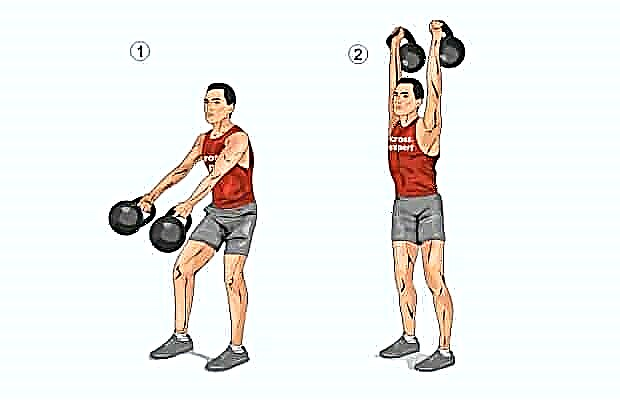Glutamic (glutamic) acid is one of the types of amino acids, which is the main constituent of almost all proteins in the body. It belongs to the class of "excitatory" amino acids, i.e. promoting the transmission of nerve impulses from the central to the peripheral nervous system. In the body, its concentration is 25% of the total number of these substances.
Amino acid action
Glutamic acid is valued for being involved in the synthesis of many healthy trace elements (histamine, serotonin, folic acid). Due to its detoxifying properties, this amino acid helps to neutralize the action of ammonia and remove it from the body. Due to the fact that it is an integral part of proteins, it is involved in energy metabolism, acid is very important for people who are actively involved in sports.
The main function of glutamic acid is to accelerate the transmission of nerve impulses due to the excitatory effect on neurons. In sufficient quantities, it improves brain function by speeding up the speed of thought processes. But with its excessive concentration, nerve cells experience excessive excitement, which can lead to their damage and death. Neurons are protected by neuroglia - they have the ability to absorb glutamic acid molecules without letting it into the intercellular space. In order to avoid an overdose, it is necessary to control the dose and not exceed it.
Glutamic acid improves the permeability of potassium into the cells of muscle fibers, including the fibers of the heart muscle, affecting its performance. It activates the regenerative ability of trace elements and prevents the occurrence of hypoxia.
Content in products
The body receives glutamic acid from food. It is found in a fairly high concentration in cereals, nuts (especially peanuts), in the legumes, seeds, dairy products, various meats, gluten and gluten-free cereals.
In a young, healthy body, glutamic acid synthesized from food is sufficient for normal functioning. But with age, in the presence of chronic diseases, as well as with intense sports, its content decreases and the body often requires additional sources of this substance.

© nipadahong - stock.adobe.com
Indications for use
The action of glutamic acid is indispensable for the prevention and treatment of a wide range of diseases of the nervous system. It is prescribed for mild forms of epilepsy, mental illness, nervous exhaustion, neuropathy, depression, as well as to eliminate complications after meningitis and encephalitis. In pediatrics, glutamic acid is used in complex therapy for infantile cerebral palsy, Down's disease, mental retardation, and poliomyelitis.
For serious physical activity with high energy consumption, it is used as a restorative component.
Instructions for use
Adults take one gram no more than three times a day. The dosage for children depends on the age:
- Up to a year - 100 mg.
- Up to 2 years - 150 mg.
- 3-4 years - 250 mg
- 5-6 years old - 400 mg.
- 7-9 years old - 500-1000 mg.
- 10 years and older - 1000 mg.
Glutamic acid in sports
Glutamic acid is one of the components of sports nutrition. Thanks to it, many other useful amino acids and trace elements are produced. This means that with a lack of a certain type of substance in the body, they are able to synthesize from others, the content of which is currently high. This property is actively used by athletes when the degree of load is very high, and little protein has been received from food. In this case, glutamic acid is involved in the process of nitrogenous redistribution and helps to use the proteins contained in sufficient quantities in the structure of the internal organs for the construction and repair of muscle fiber cells.
The more stress an athlete takes on, the more toxic substances are formed in his body, including extremely harmful ammonia. Due to its ability to attach ammonia molecules to itself, glutamic acid removes it from the body, preventing its harmful effects.
The amino acid is able to reduce the production of lactate, which causes muscle pain during intense muscle exertion during exercise.
In addition, glutamic acid is easily converted into glucose, which can be deficient in athletes during exercise.
Contraindications
Glutamic acid should not be added to the diet if:
- diseases of the kidneys and liver;
- peptic ulcer;
- fever;
- high excitability;
- hyperactivity;
- being overweight;
- diseases of the hematopoietic organs.
Side effects
- Sleep disturbance.
- Dermatitis.
- Allergic reactions.
- Upset stomach.
- Decreased hemoglobin levels.
- Increased excitability.
Glutamic acid and glutamine
The names of these two substances are very similar, but do they have the same properties and effects? Not really. Glutamic acid is synthesized into glutamine, it is he who is the source of energy and an important component of muscle cells, skin and connective tissue. If there is not enough glutamic acid in the body, glutamine is not synthesized in the amount required, and the latter begins to be produced from other substances, for example, from proteins. This leads to a lack of protein in the cells, resulting in sagging skin and a decrease in muscle mass.
If we talk about the distinctive properties of glutamine and glutamic acid, then we can identify the following differences:
- glutamine contains a nitrogen molecule in its chemical composition and has a regenerating effect, increasing muscle mass, while glutamic acid does not have nitrogen and has a stimulating effect;
- glutamic acid is sold in drugstores only in pill form, while glutamine can be purchased in powder, pill or capsule form;
- the dosage of glutamine depends on body weight and is taken at the rate of 0.15 g to 0.25 g per kg of weight, and glutamic acid is taken 1 g per day;
- the main target of glutamic acid is the central nervous system with all its components, and glutamine has a beneficial effect not only on the nervous system - it plays an important role in the restoration of muscle and connective tissue cells, promotes fat breakdown and prevents catabolism.
Despite the differences listed above, these substances are inextricably linked with each other - taking glutamic acid increases the concentration of glutamine.









